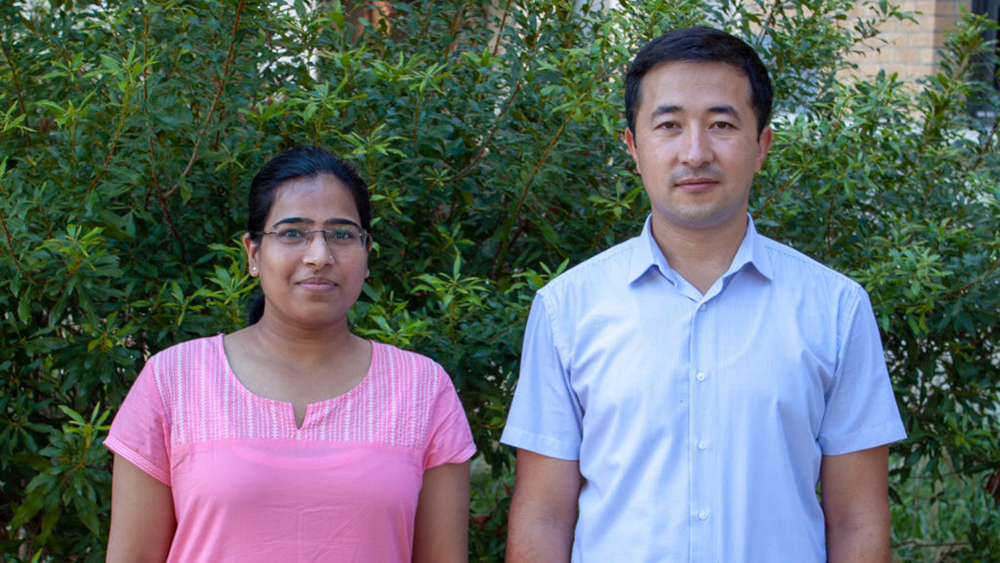
In September, two new Stanton Nuclear Security Fellows joined the Department of Nuclear Engineering at Texas A&M University and will be working with the Texas A&M Engineering Experiment Station's Center for Nuclear Security Science and Policy Initiatives (NSSPI) for the 2018-19 academic year.
The Stanton Nuclear Security Fellows Program supports young scholars to pursue policy-relevant technical research in nuclear security for a 12-month period at Texas A&M under the guidance of a faculty mentor. Fellowships are available for postdoctoral researchers and early-career faculty with the express mission of stimulating “the development of the next generation of thought leaders in nuclear security by supporting research that will advance policy-relevant understanding of the issues.”
This year’s Stanton fellows are early-career faculty member Dr. Sherzod Kurbanbekov and postdoctoral researcher Dr. Kavita Rathore. Both of them will spend a year working with Texas A&M faculty mentors Dr. Sunil Chirayath, NSSPI director and associate professor of nuclear engineering, and Dr. Matthew Fuhrmann, professor of political science.
Kurbanbekov will conduct an investigation of the high-enriched uranium (HEU) stockpile of North Korea. He will use information available in the public domain as well as theoretical projections to estimate the expected quantity of HEU in the North Korean stockpile produced through both known and possibly clandestine enrichment capacity in the country. Kurbanbekov notes “the results of this study could help U.S. policymakers achieve better outcomes in future negotiations with North Korea.”
Kurbanbekov received his doctoral degree in materials science from the D. Serikbayev East Kazakhstan State Technical University, ust-Kamenogorsk, Kazakhstan. He began working at the Institute of Atomic Energy branch of the Republican State Enterprise National Nuclear Center of the Republic of Kazakhstan in Kurchatov as a researcher in October
Rathore’s project focuses on the effects of the withdrawal of the U.S., and possibly the European Union (EU), from the Joint Comprehensive Plan of Action (JCPOA). The JCPOA, widely known as the Iran nuclear deal, was implemented in 2016 with the aim of ensuring that the Iranian nuclear program remains exclusively peaceful. With the announcement in 2018 that the U.S. would withdraw from the JCPOA, the question of how this withdrawal will affect Iranian nuclear proliferation becomes pertinent.
“The scenarios of the U.S. withdrawal
Nuclear weapons latency is the time needed for a non-nuclear weapons state to develop a nuclear weapon once the decision to proliferate has been made. Rathore will analyze the broad political effects of U.S., and possibly EU, withdrawal from the JCPOA and will use the Nuclear Weapons Latency Tool developed at Texas A&M to estimate the nuclear weapons latency values in face of this new political reality compared to that under continued implementation of the JCPOA.
Rathore completed her doctoral degree in nuclear engineering and technology from the Indian Institute of Technology, Kanpur, India. She completed her master's degree in nuclear science and technology from Delhi University in Delhi, India, and bachelor's degree in physics from Kota University in Kota, India.
The Stanton Nuclear Security Fellows program is supported by the Stanton Foundation, which was created by Frank Stanton to support work in his areas of interest, including nuclear security. Texas A&M is one of seven leading institutions in nuclear security in the U.S. that currently hosts Stanton nuclear security fellows.